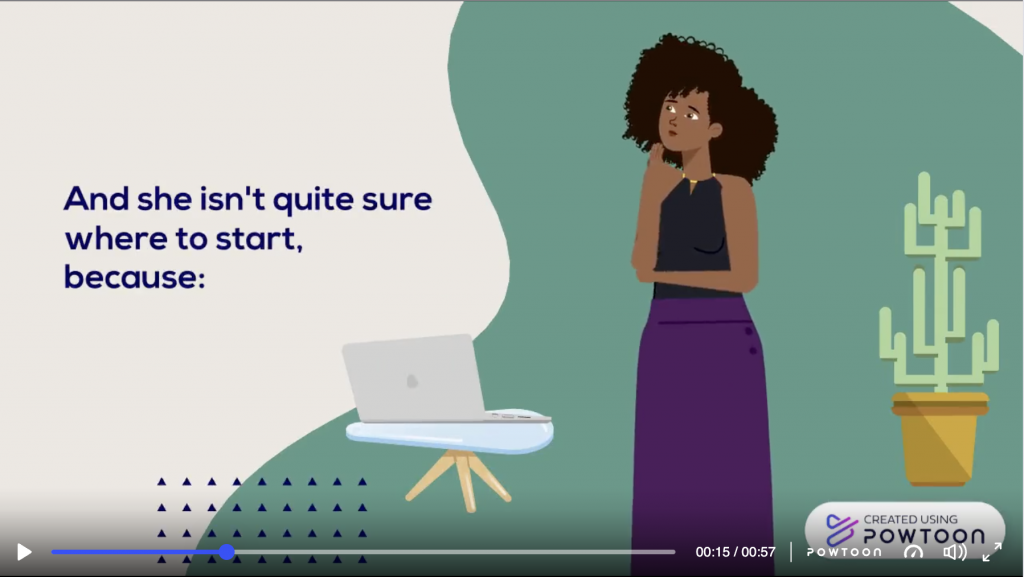For this post, I’d like to reflect on two considerations in the design of my module: the “interleaved practice” technique and the Powtoon scenarios (Devers et al., 2018, p. 16).
Interleaved practice
The technique of “interleaved practice” particularly stood out to me from our readings from week 9 (Devers et al., 2018, p. 16). To some extent I’ve been using this in practice to keep learners’ attention, and I really appreciated learning more about the theoretical side of it. I took this opportunity to be intentional about leveraging interleaved practice as I designed my module, in terms of the content, information presentation, as well as learner responses. Below is some of my notes on this from my project documentation.
-
- Content: The first module ties together two related concepts: year-end reviews versus continuous conversations, and describing year-end reviews to direct reports. These two concepts support one another because the clearer the learner is on the “more abstract” considerations of year-end reviews (p. 17), the better they would be able to meaningfully describe the ‘why’ and ‘what’ of year-end reviews.
- Information presentation: The module starts by introducing the animated character Jane, which adds a human element to the “[l]earner-content” interaction (Anderson, 2008, p. 58), with the promise that Jane will be there to share scenarios throughout the module to deepen the learner’s learning. Further down the page, the readings share different perspectives on year-end reviews, accompanied by reflection prompts to encourage learners to consider the information presented. Later in the module, Jane returns to share a scenario, and then the workshop prep shifts back towards prompting abstract thinking.
- Learner responses: The module is designed for learners to share their responses using different forms of media, including a Mentimeter word cloud, text response to a discussion post, and a video response to the scenario.
Powtoon

See Powtoon videos: Intro, module 1 scenario
I had not used Powtoon before and took this opportunity to finally create an account. I wanted to present practice scenarios in a way that feel more real, and thought Powtoon could be a quick way to create short, animated videos of the scenarios.
I decided to create the animated character Jane who comes to the learner with situations she is ‘encountering’. I introduced Jane at the start of the module and let learners know to expect Jane throughout the modules, to avoid any feelings of abruptness when Jane pops up with a scenario.
In addition, I believe Jane also acts as a course companion for the self-led components, which could support “[l]earner-content” interaction (Anderson, 2008, p. 58). I also think these scenario videos could help motivate with “[s]ensory curiosity” (Malone & Lepper, 1987, as cited in Ciampa, 2013, p. 84).
References
Anderson, T. (2008a). Towards a theory of online learning. In T. Anderson & F. Elloumi (Eds.), Theory and practice of online learning (pp. 45-74). Athabasca University. https://www.aupress.ca/books/120146-the-theory-and-practice-of-online-learning/
Ciampa, K. (2013). Learning in a mobile age: An investigation of student motivation. Journal of Computer Assisted Learning, 30(1), 82–96. http://onlinelibrary.wiley.com/doi/10.1111/jcal.12036/epdf
Devers, J. C., Devers, E. E., & Oke, L. D. (2018). Encouraging metacognition in digital learning environments. In D. Ifenthaler (Ed.), Digital workplace learning: Bridging formal and informal learning with digital technologies (pp. 9-22). Springer International Publishing AG.
